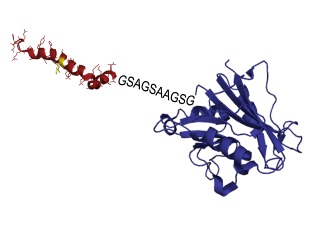Test to study proteins involved in neurodegenerative diseases

Oligomers are formed by the union of two to twenty molecules. Recent research studies seem to indicate that their toxicity is higher than that of amyloid fibres. However, studying these substances is not easy given that they are unstable and their formations are transitory.
The method developed by researchers at UAB locates and monitors in vivo the aggregation process of the protein using fluorescence techniques and without the need to resort to alternative methods. It also allows studying compounds which inhibit oligomers as potentially therapeutic mechanisms to prevent posterior formations of amyloid plaques.
The screening system was carried out by genetically modifying Saccharomyces cerevisiae yeast to link human protein aggregation to cell death. It is based on the fusion of the human peptide under study with the human variant of a protein needed for the survival of the modified yeast, dihydrofolate reductase (DHFR). The aggregation of the peptide deactivates the DHFR protein and finally produces the death of the cell, thereby providing a detection system of molecules with tendency to aggregate and in which any compound capable of separating or inhibiting this aggregation would favour the survival of the cell.
Researchers carried out the study with the AB42 peptide, the main cause of Alzheimer's disease. To validate the test they worked with several compounds in vitro which, in studies related to the disease, had demonstrated to be effective against the formation of oligomers, amyloid fibres or both types of molecules. The system only showed to be effective with compounds affecting oligomers, which makes it a very specific method for the initial detection of the aggregation process. The system was also validated with chaperones, a group of proteins which increase the dissolution of protein aggregation and favour cell survival. In addition to AB42, researchers validated the assay with regard to the detection of initial aggregations, by using proteins involved in Parkinson's and Huntington's disease.
According to Salvador Ventura, one of the authors of the study, the system is easy to use and allows scientists to work quickly and to analyse with reliability the potential therapeutic efficacy of an infinite number of compounds at experimental level. Now there is the need to automate the system - with plates allowing for the simultaneous analysis of more than fifty molecules per assay - to be used in basic research. For the moment the system has been patented by the researchers.
References
"Linking amyloid protein aggregation and yeast survival". Morell, M., S. De Groot, N., Vendrell, J., Avilés, F.X., Ventura S. Molecular Biosystems. DOI: 10.1039/c0mb00297f.

